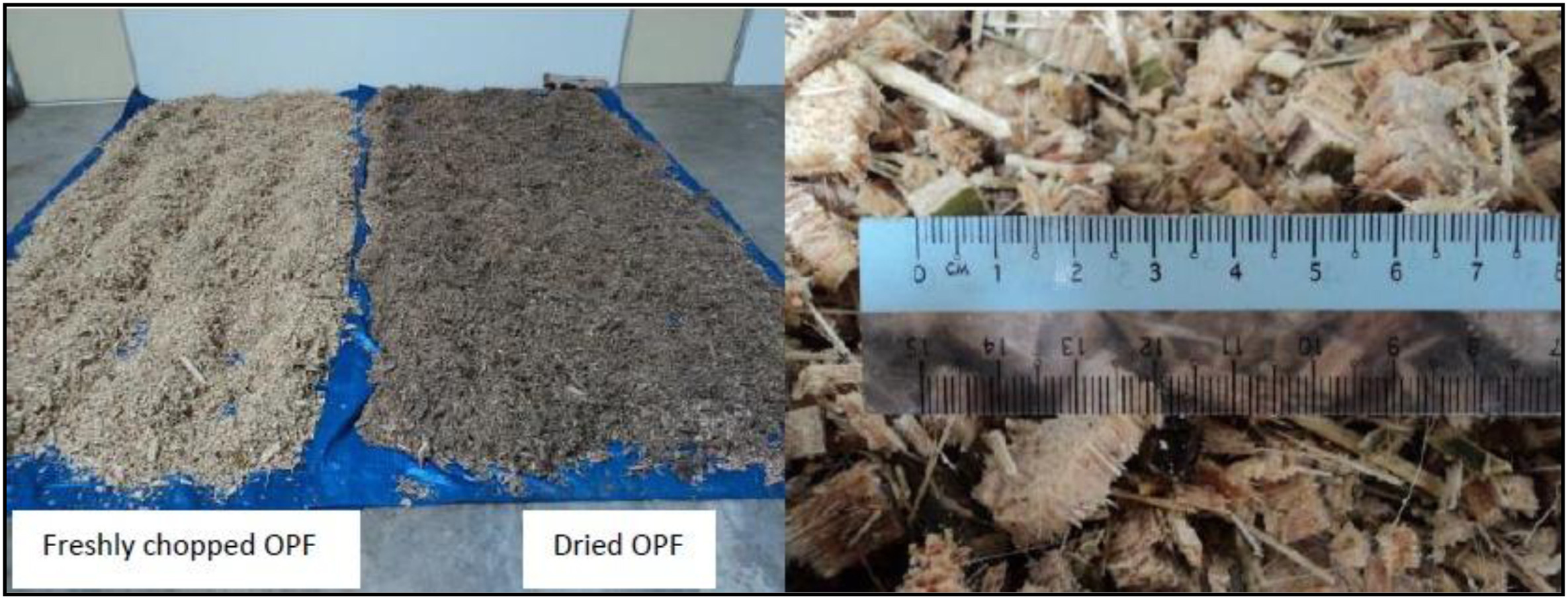Study of the effects of operating factors on the resulting producer gas of oil palm fronds gasification with a single throat downdraft gasifier
Author: Shaharin Anwar Sulaiman - December 2014
Abstract
Malaysia has abundant but underutilized oil palm fronds. Although the gasification of biomass using preheated inlet air as a gasifying medium is considered an efficient and environmentally friendly method, previous studies were limited to certain types of biomass wastes and gasifier designs. Hence, the effects of preheating the gasifying air on oil palm fronds gasification in a single throat downdraft gasifier are presented in this paper. In addition, the effects of varying the flow rate of the gasifying air and the moisture content of the feedstock on the outputs of oil palm fronds gasification were studied. A response surface methodology was used for the design of the experiment and the analysis of the results. The results showed that preheating the gasifying air to 500 °C increased the concentrations of CO from 22.49 to 24.98%, that of CH4 from 1.98 to 2.87%, and that of H2 from 9.67 to 13.58% on dry basis in the producer gas at a 10% feedstock moisture content. Conversely, the dry basis concentrations of CO, CH4, and H2 decreased from 22.49, 1.98 and 9.67% to 12.01, 1.44 and 5.45%, respectively, as the moisture content increased from 10 to 20%. The airflow rate was also proven to significantly affect the quality of the resulting producer gas.
Methodology
OPF was used as a feedstock for the gasification experiment. After collecting the fronds in the plantation, the leaves were shredded using a machete, and the petioles were chopped using a chopper to a maximum length of 25 mm as shown in Figure 1. Open-air and oven-dried feedstock were used for the experiments. An oven at 105 °C was used to dry the feedstock in order to meet the moisture content requirement (below 15%, wet basis). The results of proximate and ultimate analyses and higher heating value (HHV) of OPF are shown in Table 1.
Impact & Benefits
Optimization of Gasification Process: Understanding how different operating factors such as temperature, residence time, air flow rate, and feedstock characteristics affect the producer gas composition allows for the optimization of the gasification process. This optimization can lead to higher gas yields, improved gas quality, and increased efficiency of energy conversion.
Resource Utilization: Oil palm fronds are abundant agricultural residues in regions where palm oil is cultivated. By studying the gasification process, researchers can find efficient ways to convert these residues into valuable energy resources, thereby promoting resource utilization and reducing waste.
Energy Production: Producer gas generated from oil palm fronds gasification can be used as a fuel for various applications, including electricity generation, heating, and cooking. Understanding the operating factors that influence gas composition helps in producing gas with the desired properties for specific energy applications.
Environmental Benefits: Gasification is generally considered a cleaner technology compared to direct combustion of biomass. By studying the effects of operating factors, researchers can develop gasification processes that minimize emissions of pollutants such as particulate matter, tar, and greenhouse gases, thus reducing environmental impact.
Market Potential
Industry Demand: Understanding the demand for alternative energy sources, particularly in regions where oil palm fronds are abundant, is crucial. If there's a significant need for cleaner energy solutions or if there are incentives for renewable energy adoption, the potential market could be substantial.
Technological Viability: Considering the regulatory landscape regarding emissions and renewable energy targets can provide insights into the market potential. If there are stringent regulations on emissions or supportive policies favoring renewable energy, the market potential could be significant.
Environmental Regulations and Policies: Regulations and policies related to renewable energy, waste management, and emissions reduction play a significant role in shaping market dynamics. Understanding how these regulations affect the adoption of biomass gasification technologies is crucial for assessing market potential.
Competitive Landscape: Assessing competing technologies and their market penetration is essential. If there are already established methods for gasification or alternative energy production using oil palm fronds, understanding their market share and limitations can help gauge the potential for the proposed study.



